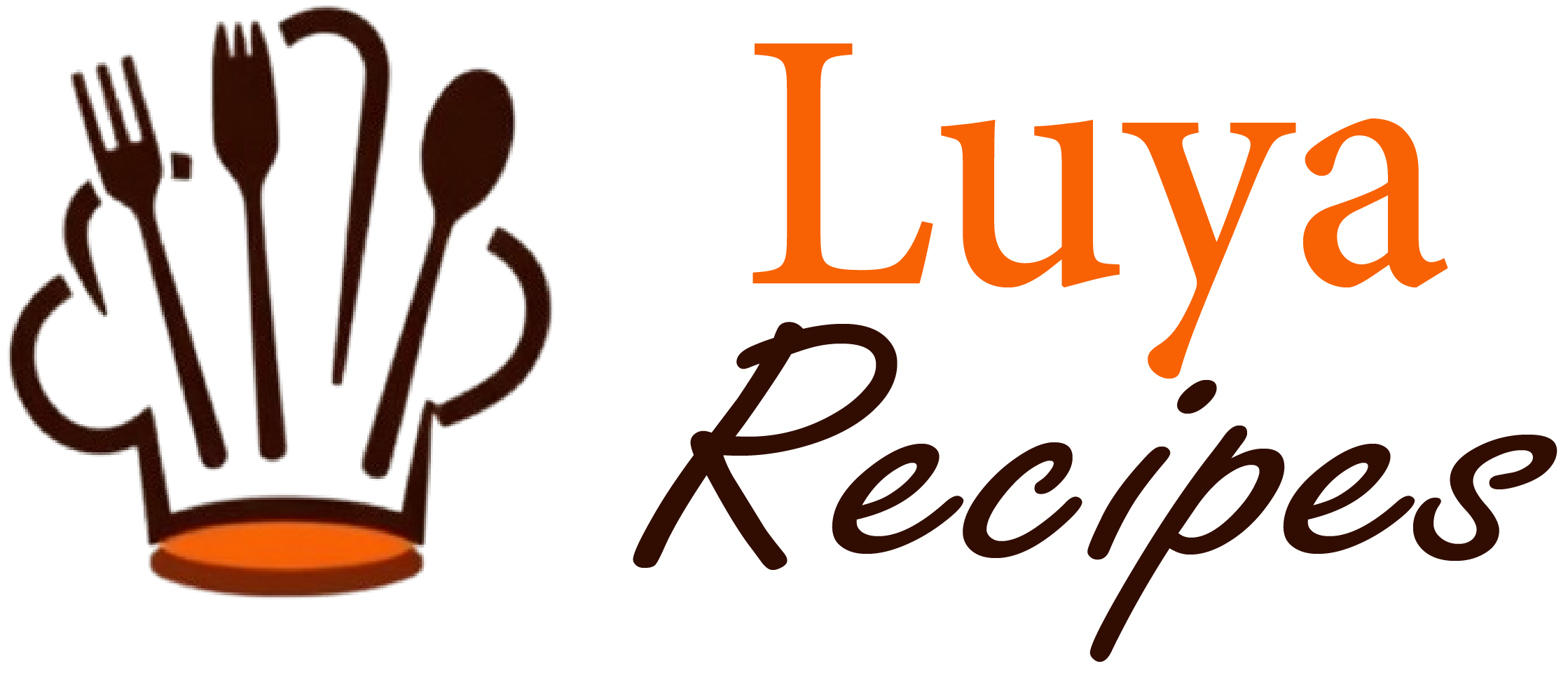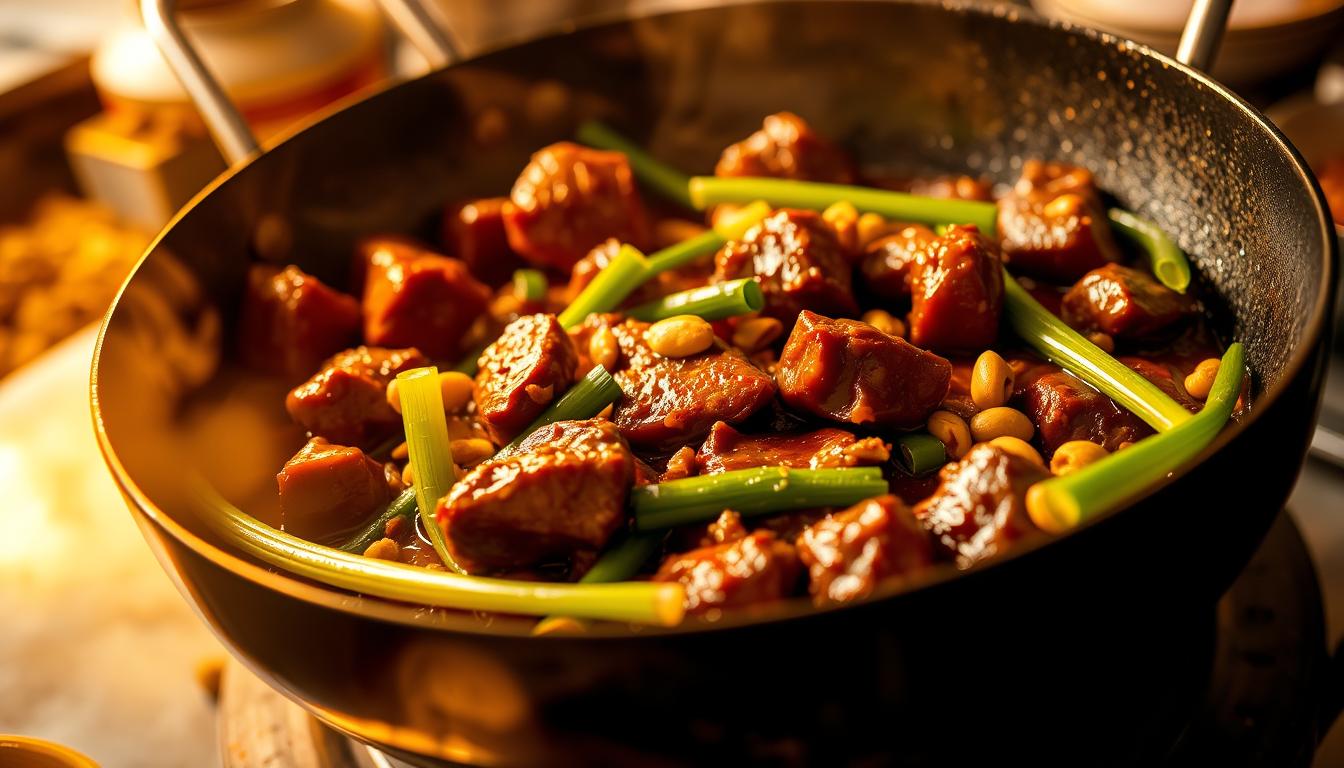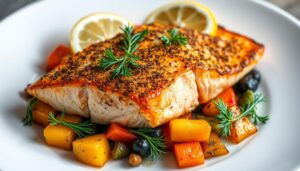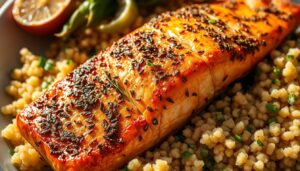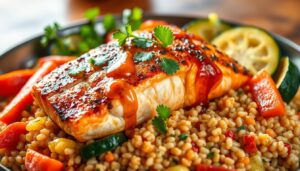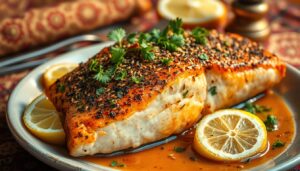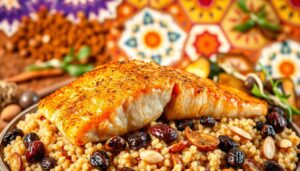Discover the mouthwatering world of bo luc lac, a Vietnamese cuisine classic that will transform your home cooking experience. This shaking beef recipe offers an incredible blend of tender meat and explosive flavors that will transport your taste buds straight to the bustling streets of Vietnam.
You’ll learn how to create a restaurant-quality shaking beef dish that captures the essence of traditional Vietnamese cooking. With roots deeply embedded in culinary heritage, this recipe from luyarecipes.com promises an authentic and delectable dining adventure that even novice cooks can master.
Preparing bo luc lac is more than just cooking—it’s an art form that combines precise techniques, carefully selected ingredients, and a passion for vibrant flavors. Whether you’re a seasoned chef or a curious food enthusiast, this shaking beef recipe will elevate your cooking skills and impress your dinner guests.
Key Takeaways
- Learn an authentic Vietnamese shaking beef recipe
- Master the signature cooking technique of bo luc lac
- Understand the cultural significance of this dish
- Discover professional tips for perfect meat preparation
- Create restaurant-quality Vietnamese cuisine at home
Understanding Vietnamese Shaking Beef: A Culinary Heritage
Vietnamese culinary heritage boasts a rich tapestry of flavors, with bo luc lac standing out as a remarkable dish that captures the essence of traditional cooking. This beloved recipe represents more than just a meal – it’s a cultural experience that tells a story of Vietnam’s gastronomic traditions.
Origins of Bo Luc Lac
Bo luc lac, or traditional shaking beef, emerged from the vibrant culinary landscape of Vietnam. The dish originated in southern Vietnam, where French colonial influences blended with local cooking techniques. Farmers and urban dwellers alike embraced this flavorful preparation, transforming simple ingredients into a sophisticated meal.
Cultural Significance in Vietnamese Cuisine
“Food is our common ground, a universal experience.” – James Beard
In Vietnamese culture, bo luc lac represents more than nutrition. The dish symbolizes hospitality, community, and the artistry of cooking. Family gatherings and special celebrations often feature this iconic recipe, connecting generations through shared culinary experiences.
Traditional Preparation Methods
The bo luc lac history reveals intricate preparation techniques passed down through generations. Chefs carefully select premium beef cuts, marinate them with precision, and use a unique shaking technique that ensures even cooking and maximum flavor absorption. This method transforms simple ingredients into a culinary masterpiece that delights both home cooks and professional chefs.
Essential Ingredients for Perfect Shaking Beef
Creating an authentic Vietnamese shaking beef starts with selecting the right shaking beef ingredients. Your culinary journey begins with high-quality beef – typically tenderloin or sirloin – which forms the heart of this delectable dish. The magic happens when you combine premium meat with traditional Vietnamese seasonings that transform an ordinary meal into an extraordinary experience.
“The soul of Bo Luc Lac lies in its carefully chosen beef marinade components.” – Vietnamese Culinary Experts
Your beef marinade components will typically include garlic, soy sauce, oyster sauce, and a touch of sugar. These ingredients create a complex flavor profile that makes shaking beef so memorable. Fresh ingredients are crucial – minced garlic, crushed black pepper, and a splash of rice vinegar bring depth to your marinade.
Key Vietnamese seasonings like fish sauce provide an umami kick that elevates the entire dish. You’ll want to ensure each ingredient is fresh and of high quality. For those seeking a detailed ingredient list, luyarecipes.com offers comprehensive guidance to help you master this classic Vietnamese recipe.
Remember that balance is key. The right combination of sweet, salty, and savory elements will turn your shaking beef into a restaurant-quality meal that will impress family and friends.
Selecting and Preparing the Right Cut of Beef
Crafting the perfect shaking beef starts with choosing the right meat. Your selection can make or break this classic Vietnamese dish. The best beef for shaking beef requires careful consideration of cut, quality, and preparation techniques.
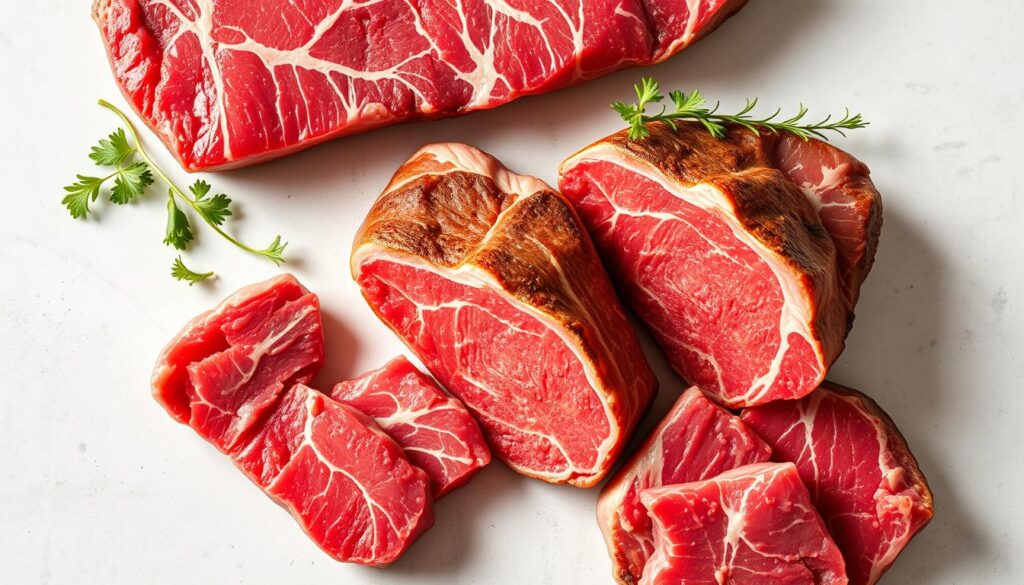
Choosing Premium Beef Cuts
Top sirloin and ribeye stand out as the most exceptional cuts for shaking beef. These premium options deliver incredible tenderness and rich flavor. Look for well-marbled meat with minimal connective tissue. Aim for cuts around 1-inch thick to ensure even cooking and maximum juiciness.
Mastering Marinating Techniques
Meat preparation transforms ordinary beef into an extraordinary meal. Start by cutting your beef into uniform 1-inch cubes against the grain. This approach guarantees maximum flavor absorption during marinating. Combine soy sauce, garlic, sugar, and black pepper to create a robust marinade that penetrates deep into the meat fibers.
“Great shaking beef begins with thoughtful meat selection and precise preparation.” – Vietnamese Culinary Expert
Meat Preparation Pro Tips
Pat your beef dry before marinating to help seasonings adhere better. Allow the meat to marinate for 30 minutes to 2 hours at room temperature. Avoid over-marinating, which can break down protein structures and compromise texture. Always use fresh, high-quality ingredients for the most authentic flavor experience.
The Secret Behind the Perfect Marinade
Crafting the ideal shaking beef marinade is an art that transforms ordinary meat into an extraordinary culinary experience. Your Vietnamese marinade recipe is the key to unlocking deep, complex flavors that define this iconic dish. The right combination of ingredients creates a powerful flavor infusion that penetrates every fiber of the beef.
“A great marinade is like a symphony of flavors dancing on your palate” – Vietnamese Culinary Experts
The core of an authentic shaking beef marinade typically includes soy sauce, garlic, sugar, and fish sauce. These ingredients work together to create a balance of sweet, salty, and umami notes. Garlic provides depth, while sugar helps create that perfect caramelization during cooking. Fish sauce adds a unique complexity that elevates the entire dish.
Marinating time is crucial for maximum flavor absorption. Aim to marinate your beef for 30 minutes to 2 hours. Longer marination can break down the meat’s texture, so timing is everything. Pro tip: Always marinate in the refrigerator and use a non-reactive container to preserve the marinade’s integrity.
For those seeking a foolproof approach, Luya Recipes offers tested marinade recipes that guarantee delicious results every time. Experiment with different ratios and ingredients to find your perfect shaking beef marinade that will impress family and friends.
Mastering the Shaking Beef Cooking Technique
Cooking shaking beef is an art that requires precision and skill. The right technique can transform simple ingredients into a restaurant-quality dish that will impress your family and friends. Understanding the nuanced shaking beef cooking technique is key to creating an authentic Vietnamese culinary experience.
The magic of this dish lies in its unique preparation method. Wok cooking tips are crucial for achieving the perfect texture and flavor. Your success depends on managing heat, timing, and movement with expert precision.
Proper Wok Temperature Control
High heat is the secret to a perfect beef stir-fry method. Preheat your wok until it’s smoking hot. This ensures a quick sear that locks in the meat’s juices and creates a delicious caramelized exterior. Watch your temperature carefully to prevent burning while maintaining that intense heat.
The Signature Shaking Motion
“The shake is what makes this dish special – it’s not just cooking, it’s performance art in the kitchen.” – Chef Mai Nguyen
The signature shaking motion isn’t just for show. By constantly moving the beef in the wok, you create an even cook and develop a beautiful caramelization. Rapid, quick tosses prevent sticking and ensure each piece of meat gets equal heat exposure.
Timing Your Cook
Precision timing separates good from great shaking beef. Typically, you’ll want to cook the beef for 2-3 minutes total, flipping and shaking every 30 seconds. The goal is a perfect medium-rare finish with a crisp exterior and tender interior.
Serving Suggestions and Accompaniments
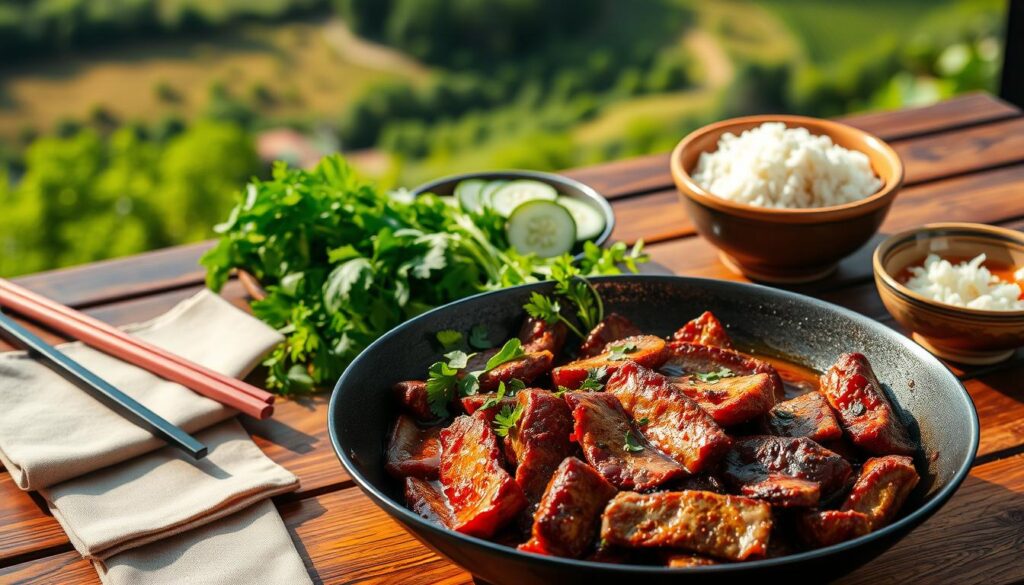
When exploring shaking beef serving ideas, you’ll want to create a balanced and delicious meal that highlights the dish’s rich flavors. Traditional Vietnamese side dishes play a crucial role in complementing the savory beef, transforming your meal from simple to spectacular.
Start with steamed jasmine rice as your foundation. The fluffy white rice absorbs the beef’s delectable marinade, creating a perfect base for meal pairing. Pair your shaking beef with a crisp watercress salad dressed with lime and herbs to cut through the meat’s richness.
“A great Vietnamese meal is about balance – sweet, sour, salty, and umami working together in harmony.” – Chef Mai Nguyen
For a modern twist on Vietnamese side dishes, consider adding pickled vegetables like daikon radish or quick-pickled onions. These tangy accompaniments provide a bright contrast to the beef’s deep, caramelized flavors. Garnish with fresh cilantro and crushed peanuts to add texture and depth to your plate.
Your shaking beef can also shine alongside simple vegetable stir-fries or a light cucumber salad. The key is creating a harmonious plate that lets each component complement the others without overwhelming the star of the dish – your perfectly cooked, tender shaking beef.
Common Mistakes to Avoid When Making Shaking Beef
Perfecting bo luc lac requires understanding potential shaking beef cooking mistakes that can derail your culinary experience. Even experienced home chefs encounter challenges when preparing this classic Vietnamese dish.
Cooking shaking beef demands precision and attention to detail. Knowing how to troubleshoot bo luc lac can transform your stir-fry from mediocre to magnificent.
Temperature Control Challenges
The most critical beef stir-fry tip is managing your cooking surface temperature. A wok that’s too cool prevents proper searing, while an overheated pan risks burning your meat. Aim for medium-high heat that allows a beautiful golden-brown exterior while keeping the inside tender.
Marinade Mishaps
Marinating requires a delicate balance. Over-marinating can break down meat fibers, resulting in mushy texture. Use acidic ingredients sparingly and limit marination time to 30 minutes for optimal flavor and texture.
Texture Troubleshooting
Achieving the right beef texture is an art. Cut meat against the grain, ensure uniform piece sizes, and avoid overcrowding the pan. These techniques prevent steaming and promote that coveted crispy exterior.
“Mastering shaking beef is about understanding your ingredients and respecting cooking techniques.” – Vietnamese Culinary Expert
For additional troubleshooting guidance, visit luyarecipes.com, where comprehensive cooking resources await passionate home chefs.
Tips for Storing and Reheating Leftovers
After enjoying your delicious bo luc lac, you’ll want to preserve its incredible flavor and texture. Storing shaking beef requires careful handling to maintain its quality. Always refrigerate leftover beef within two hours of cooking to ensure food safety.
“Great dishes deserve great care in storage!” – Vietnamese Culinary Experts
When storing shaking beef, place it in an airtight container and keep it in the refrigerator for up to 3-4 days. Wrap the beef tightly to prevent moisture loss and protect it from absorbing other food odors. Pro tip: separate the meat from any garnishes or salad to keep everything crisp.
Reheating bo luc lac can be tricky. The key is gentle warming to prevent toughening the meat. Use a skillet on medium-low heat and add a splash of beef broth to help retain moisture. Stir the meat gently for about 2-3 minutes until it’s heated through.
Leftover beef tips include transforming your shaking beef into new meals. Try slicing it thin for Vietnamese-inspired sandwiches or chopping it into a fresh salad. These creative approaches prevent food waste while giving your leftovers a delicious second life.
Freezing is an option for longer storage. Wrap the beef tightly in freezer-safe packaging and consume within 2-3 months for the best quality. Thaw in the refrigerator overnight before reheating.
Conclusion
Embarking on the path of Vietnamese cooking skills opens up a world of rich flavors and traditional techniques. Mastering shaking beef represents more than just preparing a meal—it’s about connecting with a vibrant culinary heritage that transforms simple ingredients into an extraordinary dish.
Your bo luc lac recipe success starts with understanding the nuanced techniques of preparation. From selecting premium beef cuts to perfecting the signature shaking motion in the wok, each step brings you closer to creating an authentic Vietnamese experience in your own kitchen. Practice and passion are key ingredients in elevating your cooking skills.
Ready to continue your culinary adventure? Visit luyarecipes.com for an extensive collection of Vietnamese recipes and expert cooking tips. Our platform provides comprehensive guides that will help you explore the depth and complexity of Vietnamese cuisine, ensuring you can recreate restaurant-quality dishes at home.
Remember, cooking is an art of continuous learning. Embrace each attempt, experiment with techniques, and most importantly, enjoy the delicious journey of mastering shaking beef. Your kitchen is your canvas, and every meal is an opportunity to create something truly spectacular.
FAQ
What does “bo luc lac” mean in Vietnamese?
Bo luc lac literally translates to “shaking beef” in Vietnamese, referring to the distinctive cooking technique where beef is shaken in a hot wok or pan during preparation.
What is the best cut of beef to use for shaking beef?
The best cuts for shaking beef include sirloin, ribeye, or tenderloin. These cuts are tender and work well with the high-heat cooking method, ensuring a juicy and flavorful result.
How long should I marinate the beef?
Ideally, you should marinate the beef for 15-30 minutes. This allows the meat to absorb the flavors without becoming too salty or breaking down the protein structure.
Can I make shaking beef with a different protein?
While traditional shaking beef uses beef, you can experiment with chicken, tofu, or shrimp as alternative proteins. However, the cooking technique and marinating process may need slight modifications.
What makes the “shaking” technique unique?
The shaking technique involves rapidly moving the beef in a hot wok or pan, which helps to create an even caramelization and ensures that each piece of meat is cooked uniformly with a delicious crispy exterior.
Is shaking beef spicy?
Traditional shaking beef is not typically very spicy. It focuses more on a balanced flavor profile of sweet, salty, and umami, though you can add chili or sriracha if you prefer more heat.
What are the best side dishes to serve with shaking beef?
Classic accompaniments include steamed white rice, watercress salad, pickled onions, and lime dipping sauce. These sides complement the rich flavors of the beef and provide a balanced meal.
How do I prevent the beef from becoming tough?
To keep the beef tender, don’t overcook it, use a high-heat cooking method, cut against the grain, and marinate briefly. Cooking the beef quickly at high temperature helps maintain its juiciness.
Can I prepare shaking beef in advance?
You can marinate the beef in advance, but it’s best to cook it just before serving to maintain the optimal texture and temperature. Cooked beef can be refrigerated for 2-3 days and reheated carefully.
What is the origin of shaking beef in Vietnamese cuisine?
Shaking beef, or bo luc lac, originated in southern Vietnam and reflects the French culinary influence during the colonial period. It combines traditional Vietnamese flavors with cooking techniques introduced by French settlers.
